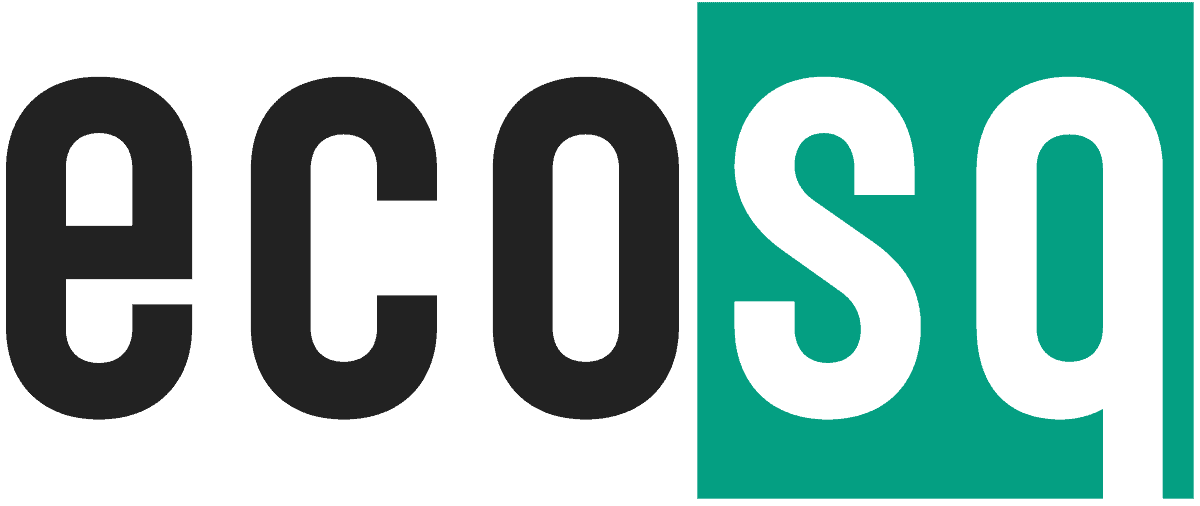Open Source Water Management: A Comprehensive Guide to Navigating the Waves of Sustainability
This article was previously published in our newsletter. The content may no longer be up to date.
Water is the most precious resource on our planet. As global populations grow and climate change intensifies, effectively managing our freshwater resources is more critical than ever. In this comprehensive guide, we’ll explore how open source technology and collaboration are revolutionizing water management across the globe.
Overview of the Global Water Crisis
Water covers over 70% of the Earth’s surface, yet only 3% of it is freshwater suitable for human use. Shockingly, by 2025, an estimated 1.8 billion people will live in areas plagued by water scarcity. Pollution further jeopardizes our dwindling freshwater supplies. Clearly, we’re facing an unprecedented global water crisis that demands urgent action.
Sustainable water management is vital to ensuring sufficient, safe water access for all. However, it requires overcoming complex challenges like:
- Water scarcity and stressed resources
- Contamination from pollution
- Inequitable distribution and lack of accessibility
- Water loss from inefficient systems
- Insufficient data to guide decision-making
Tackling these systemic barriers necessitates innovative solutions. Read on to discover how open source technology is helping shift the tide.
Introducing the Open Source Water Management Movement
The open source philosophy is rooted in collaboration, transparency, and universal access. These principles align seamlessly with the goals of sustainable water management.
Open source water management involves leveraging freely available technology, data, and research to collectively improve monitoring, conservation, and equitable distribution of freshwater resources.
Global communities of technologists, scientists, businesses, NGOs, governments, and citizens are working together under the banner of open source to revolutionize water management. Let’s explore some stellar examples of open source projects making waves.
Spotlight: Impactful Open Source Water Management Projects
OpenROV
OpenROV is an open source underwater robot that puts ocean exploration and conservation in the hands of citizens. These remotely operated vehicles (ROVs) use sensors to monitor underwater environments.
OpenROV applications for water management include:
- Water quality testing
- Pollution monitoring
- Aquatic ecosystem assessments
- Underwater inspections
Its open source ethos fosters collaboration in gathering vital data on water resources.
Aquamonitor
Aquamonitor is an open-source water quality monitoring system designed for real-time data collection and analysis.
It facilitates:
- Water quality assessments
- Contaminant detection
- Monitoring of drinking water safety
Communities worldwide harness Aquamonitor to safeguard their local water resources. Its open API also allows integration with various sensors and databases.
Akvo
Akvo creates open source data tools and apps to improve transparency and efficiency in the water sector. Their offerings include:
- Akvo Flow – A mobile app for field data collection on water resources and infrastructure.
- Akvo Lumen – A dashboard for visualizing and analyzing water and sanitation-related data.
- Akvo RSR – A platform for monitoring, evaluation, and reporting on international development projects.
These resources empower organizations worldwide to better track, manage, and distribute water effectively.
The Promise of Open Source for Water Quality Testing
Another immense benefit of open source in water management is democratizing water quality testing. Rather than relying solely on governments and institutions, communities can monitor their own water quality using DIY solutions.
Open Source Software
Open source software converts a smartphone, Raspberry Pi, or Arduino into a lean water testing lab. Projects like MyWQ offer code to interface with sensors that test parameters like:
- Temperature
- Turbidity
- pH levels
- Contaminants
The data can easily sync with databases for real-time monitoring of water conditions.
DIY Sensors
Innovators are also designing 3D printable, open source sensors to detect water pollutants at low cost. For instance, the E.coli Sensor enables communities to rapidly test drinking water safety.
Similar sensors exist for heavy metals, nitrates, chlorine, and microplastics. Open source electronics simplify assembling bespoke water testing setups.
Citizen Science Initiatives
The rise of citizen science also goes hand-in-hand with open source water testing. Initiatives like the Floating Sensor Network recruit communities to monitor waterways using DIY sensor rafts. The open data aids conservation and research efforts.
Empowering people to understand and protect their local water is invaluable. Open source technology makes that possible.
Open Source Driving Sustainable Water Use
With water scarcity looming, efficient use of freshwater is crucial. Advanced open source technologies are optimizing water management across sectors like agriculture, industry, and cities.
Smart Irrigation
Agriculture accounts for ~70% of global freshwater withdrawals. Smart open source irrigation systems minimize water wastage and maximize crop yields.
OpenSprinkler, for example, is an open-source sprinkler controller. Features include:
- Custom scheduling for optimal irrigation
- Weather-based watering profiles
- Remote access via WiFi
- Flow meter integration to identify leaks
Farmers can better conserve water and reduce pumping costs.
Leak Detection
Fixing leaks in water distribution networks can recapture millions of gallons of water loss. DIY open source projects enable smart leak monitoring.
PipeProbe uses inexpensive acoustic sensors attached to pipes. Users receive text or app alerts for potential leakage points. Other options use flow rate data to model usage patterns and flag anomalies.
Preventing leaks improves conservation and avoids infrastructure damage.
Smart Cities
Urbanization places heavy demands on water supplies. Open source smart city solutions are improving efficiency.
Projects like Kaa provide open middleware platforms for municipal water management. This enables:
- Integrating historical usage data
- Real-time monitoring via sensors
- Automated control of storage, treatment, and distribution
- AI-assisted anomaly detection
- Dashboards to identify optimization opportunities
Taking a holistic, data-driven approach to urban water management is key for sustainability.
Evaluating the Benefits of Open Source Water Management
The proven impacts of open source philosophy in transforming water management are multifaceted. Let’s break down the primary advantages:
- Cost savings – Open source software and DIY monitoring solutions are far more affordable than proprietary alternatives. This enables wider adoption globally.
- Flexibility – Customizable open source tools can be tailored to localized water management needs.
- Transparency – Open data improves visibility into water usage patterns and infrastructure performance.
- Community participation – Open source democratizes water management and engages communities in protecting shared water resources.
- Interoperability – Open standards allow combining data from diverse IoT systems and databases for richer insights.
- Faster innovation – The open collaborative model accelerates technological advancement in water conservation.
These decentralized benefits add up to improved access, quality, and sustainability of our precious freshwater reserves worldwide.
While open source alone cannot dispel the complex water crises we face, it is undeniably disrupting the status quo for the better.
Real World Success Stories
Open source water technology isn’t just a theoretical panacea; it’s driving measurable progress globally:
- The Latin American observatory LaRED monitors surface water quality using low-cost open source sensors. Their data guides science-based policymaking on pollutants, sanitation, and environmental risks.
- Thailand’s Mahasarakham University deployed the Aquamonitor system to aid flood monitoring and prevention. Access to real-time water level data has improved early warning capabilities.
- WaterPoint Data Exchange, launched by The Water Project NGO, harnesses open data to map 50,000 water points across Africa. This boosts maintenance and sparks innovation in remote water access.
- Switzerland’s WaMaDa citizen science project enables urban communities to monitor river water using open source sensors. Public data mobilizes society around conservation.
- The Smart Citizen Kit, with open sensors and software, has facilitated DIY air and water quality monitoring worldwide. Results have uncovered pollution, mobilized change, and driven research.
These successes reveal how open technology and data access are empowering a new era of water management globally.
Getting Started With Open Source Water Management
Curious to get your feet wet in open source water technology? Here are steps to begin:
Learn About the Landscape
- Get inspired by these examples of open source water management projects making an impact.
- Follow water forums like the Open Water Network to stay updated on developments.
- Check out curated resources like the Open Water Guide to discover tools.
Assess Local Water Challenges
- Consult with your community or organization to identify the most pressing water issues and management needs.
- Conduct water scarcity risk assessments using tools like WRI Aqueduct.
- Explore global open data platforms like WaterPoint Data Exchange to contextualize local water accessibility.
Select an Open Solution
- Browse projects that address your use cases -examples range from water quality monitoring to leak management and irrigation control.
- Assess options based on metrics like cost, ease of use, hardware needs, and customizability.
- prefer locally maintained solutions suited for your region.
Deploy, Iterate, and Scale
- Start small, deploying open tech solutions in pilot tests.
- Encourage community participation for maximum impact over time.
- Analyze results, collaborate with partners, and iterate on the implementations.
- Eventually scale successes across larger networks and communities.
Join the Movement
- Become part of open source water initiatives on crowdsourcing platforms like DIY Bio.
- If developing tech, make it open source and share documentation publicly to help others.
- Educate policymakers on open source benefits to water management policy.
- Together, we can transform our collective relationship with water!
Key Takeaways on Open Source Water Management
- Sustainably managing scarce freshwater resources is an urgent global priority requiring creative solutions.
- The open source movement aims to democratize technology and data to solve pressing world problems.
- Open source principles of transparency, collaboration, and accessibility directly align with better water monitoring and conservation.
- Open water management involves harnessing freely available tools, research, and real-time data to drive systemic efficiency and quality improvements.
- Open source boosts community participation in managing local water ecosystems.
- Key examples include robotic water quality sampling, DIY contaminant sensors, smart irrigation, leak detection, remote monitoring, and more.
- Benefits include cost savings, universal access, faster innovation, interoperability, and localized customization of water tech.
- Get started by assessing needs, researching solutions, running pilot tests, and participating in open water communities.
- Open source alone cannot fix the world’s complex water crises, but it is shifting the paradigm towards a more sustainable and equitable water future.
The open movement demonstrates the power of global cooperation in applying technology for the common good. Together, through open source innovation, we can cultivate a more water-secure world built on conservation, quality, and access for all. The waves of change are here – let’s ride them to a brighter future.






